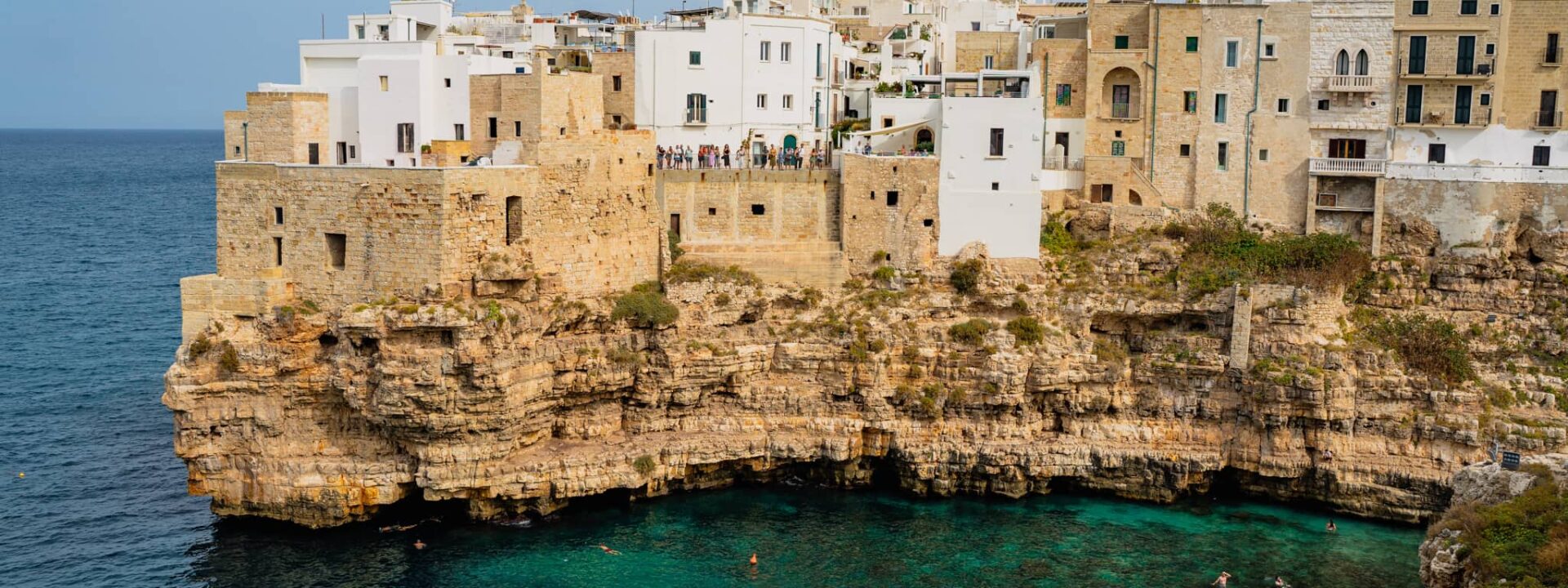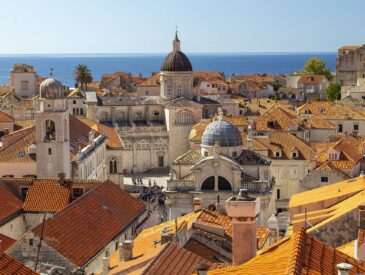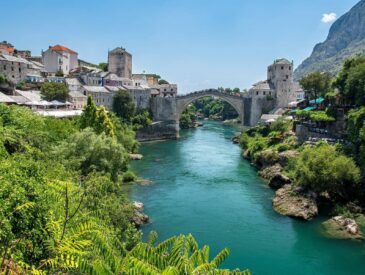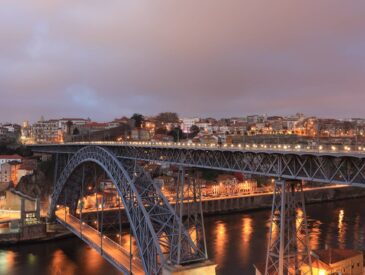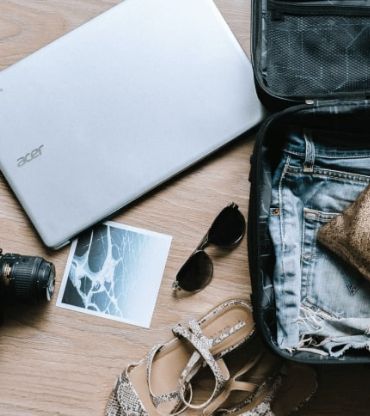Table of Contents
Puglia is located in the very south of Italy, the heel of the boot! On this Puglia 7 days itinerary, expect to :
- Discover beautiful beaches: the Adriatic coastline is stunning. You’ll see crystal-clear waters dominated by cliffs.
- Discover a typical hinterland: many villages have remained authentic and are well worth a visit.
- Taste Italian gastronomy: We had the time of our lives in this region.
We enjoyed exploring this absolutely beautiful region for 1 week! This 7 days Puglia itinerary includes all the best places to visit for a perfect trip.
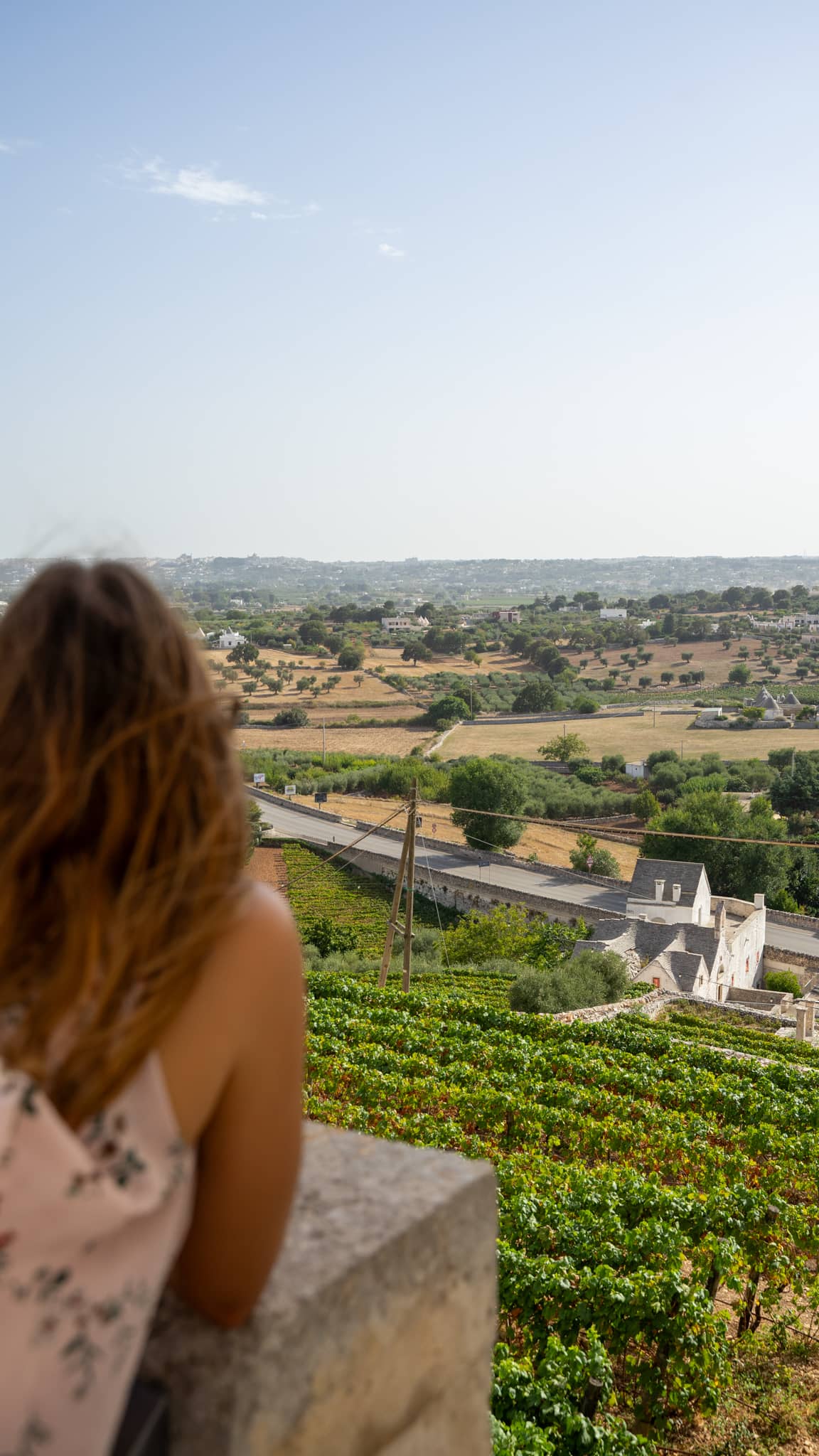
7 Days Puglia Itinerary | The Ultimate Guide
When to visit Puglia?
To make the most of your stay, the best times to visit Puglia are:
- Spring (April to June) and autumn (September and October). During these seasons, the climate is mild and pleasant, ideal for exploring charming villages, strolling along the sandy beaches, and discovering the region’s historical treasures. Moreover, the tourist crowds are often smaller than in the high summer season, allowing you to enjoy a more peaceful atmosphere.
However, if you love sunshine and lively beaches, summer is ideal, with sunny days for swimming and relaxing. Remember that July and August are the busiest months (with a peak on August 15), so it’s best to book ahead to avoid disappointment.
Where to stay in Puglia?
I highly recommend staying in a Masseria or Trullo. They are unique in Puglia and will become the highlight of your trip.
Masseria and Trullo are typical Puglian rural structures where you can stay for a country vacation on the farm.
We’re staying in a trullo near the village of Locorotondo, which I recommend. Trulli are traditional stone huts with cone-shaped roofs that date back centuries. You immerse yourself in the region’s rich history and architectural heritage by staying in one.
How many days do I need?
I recommend at least 7 days to discover most of Puglia, but if you have more time, you’ll also have the opportunity to discover the Salento region and its magnificent beaches. We would have liked to have explored the Salento region and its beaches more.
How do I get to Puglia?
You can choose between two airports to explore the surrounding area: Bari Airport (BRI) and Brindisi Airport (BDS). I chose Bari airport to start this trip to Puglia and Brindisi to finish it.
How do I get around Puglia?
All these towns are easily accessible by train, bus, car, or scooter rental, but the best option is to rent a car.
It is possible to get around Puglia without a car by train (you can check prices and itineraries on the Trenitalia website). However, this is not the most practical solution, as trains do not serve all the touristy towns.
We often took the train but also rented a scooter for 3 days.
Want to extend your trip to another Italian destination? Discover my 5-day itinerary to the Amalfi Coast or my guide to Naples.
Our Puglia itinerary 7 days
Day 1: Bari
Day 2: Polignano a mare
Day 3: Locorotondo & Alberobello
Day 4: Cisternino & Ostuni
Day 5: Monopoli
Day 6 – 7: Matera*
Day 7 – 8: Lecce
*Matera isn’t in the Puglia region, but since it’s so close, it’s definitely worth a visit! And it’s definitely worth the detour!
Tip: If you’re the kind of traveler who prefers to avoid daily check-ins and check-outs, we suggest you choose two towns as a base for this 1-week itinerary in Puglia. We recommend Polignano A Mare and Lecce.
Puglia itinerary 7 days – region by region
Puglia is divided into several regions: Bari, Brindisi, Taranto, Lecce (or Salento), Andria, and Foggia. In this guide, I will focus on Bari, Brindisi, and Salento.
The Bari region
- Bari: Generally the first and last stop on your trip to Puglia (most flights arrive here), the city is best known for its historic center, Bari Vecchia, which concentrates all of Bari’s must-see places of interest. Orecchiette is a typical Apulian pasta. In Via Arco Basso, you can watch the women at work making it, sometimes right on the street or in their own homes. I recommend a focaccia from Santa Rita. Half a day is enough to visit Bari’s historic center.
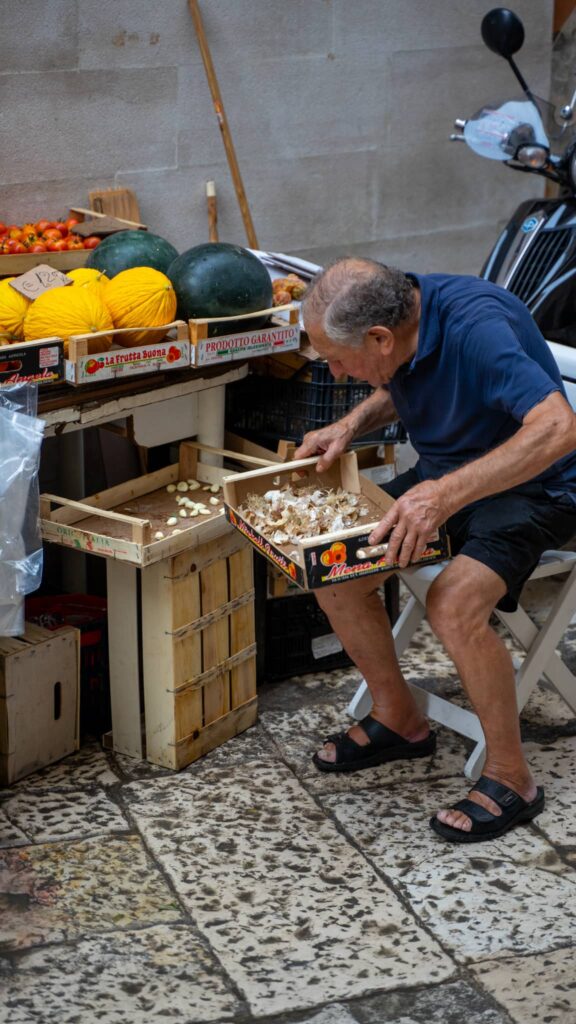

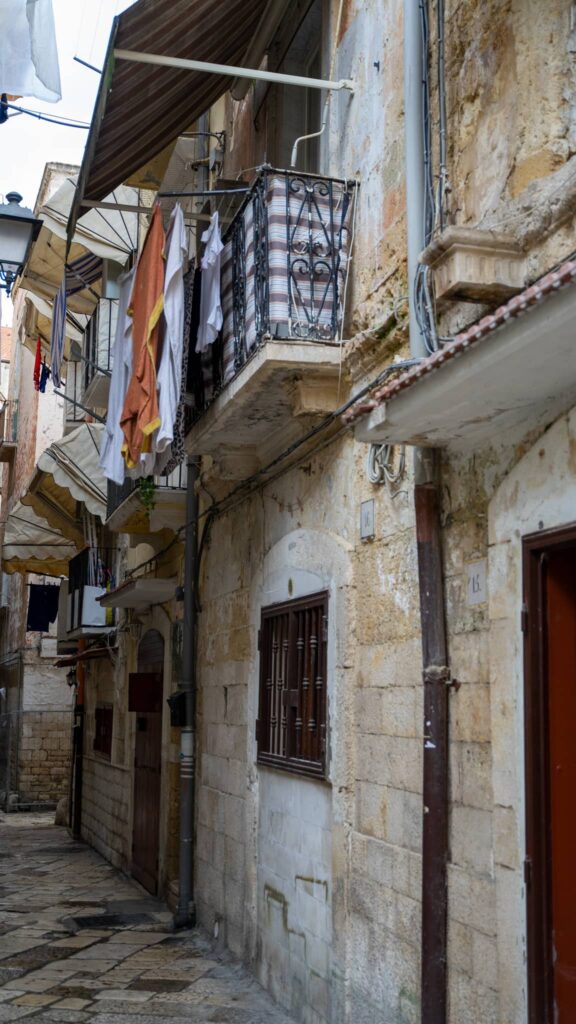
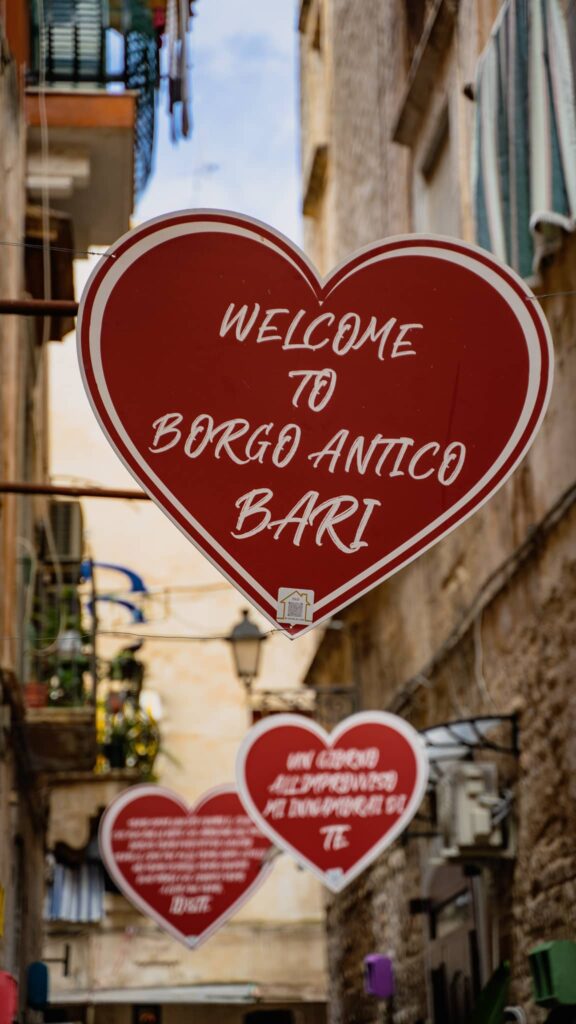
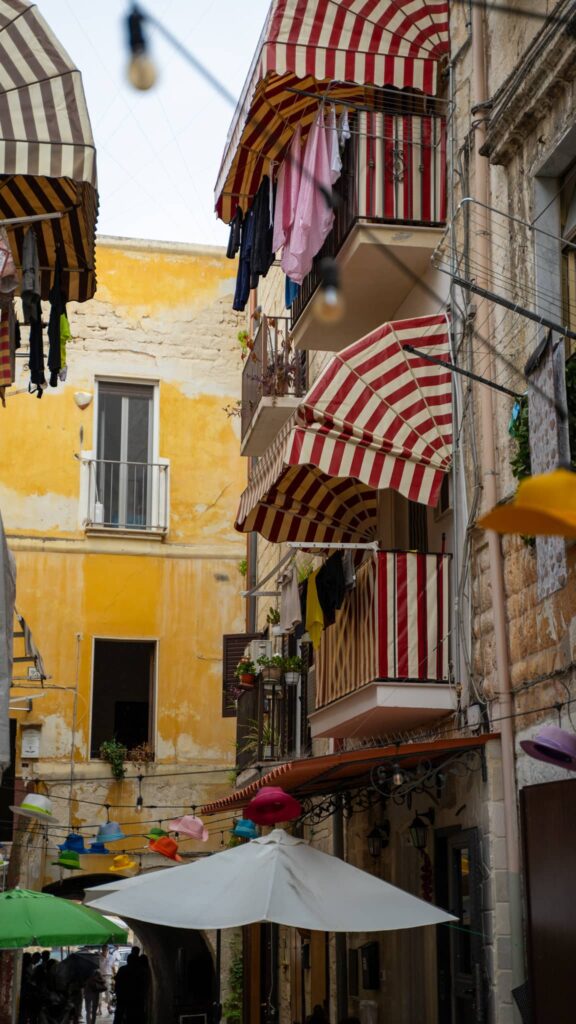
- Polignano a mare: This town is built into the limestone cliffs, with the buildings plunging directly into the turbulent waters of the Adriatic. Getting lost in the streets is the best thing you can do! Half a day is enough.
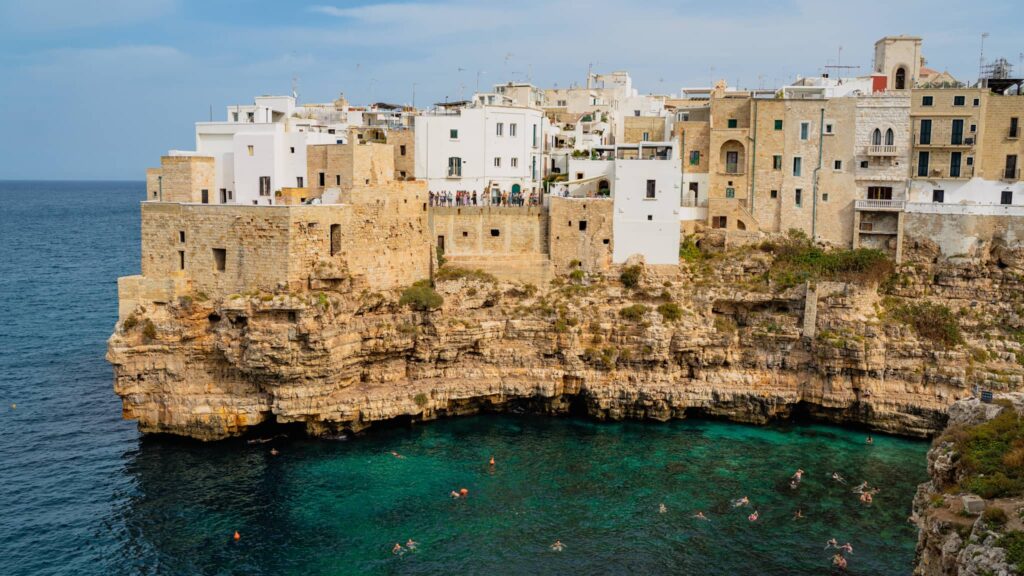
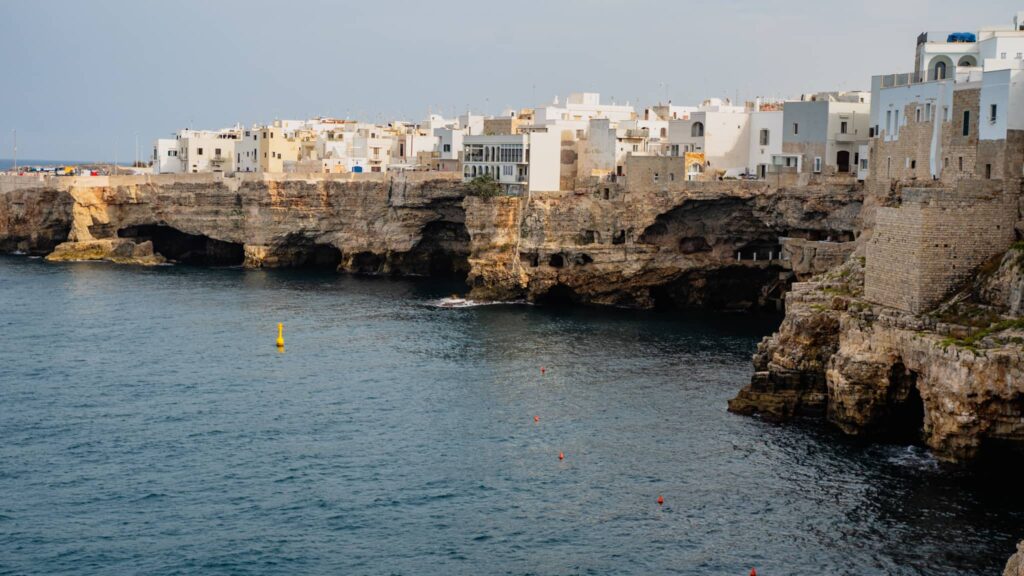
- Monopoli: It’s a coastal town that was once a fishing village. Stroll through the Centro Storico, where every street corner is incredibly picturesque.
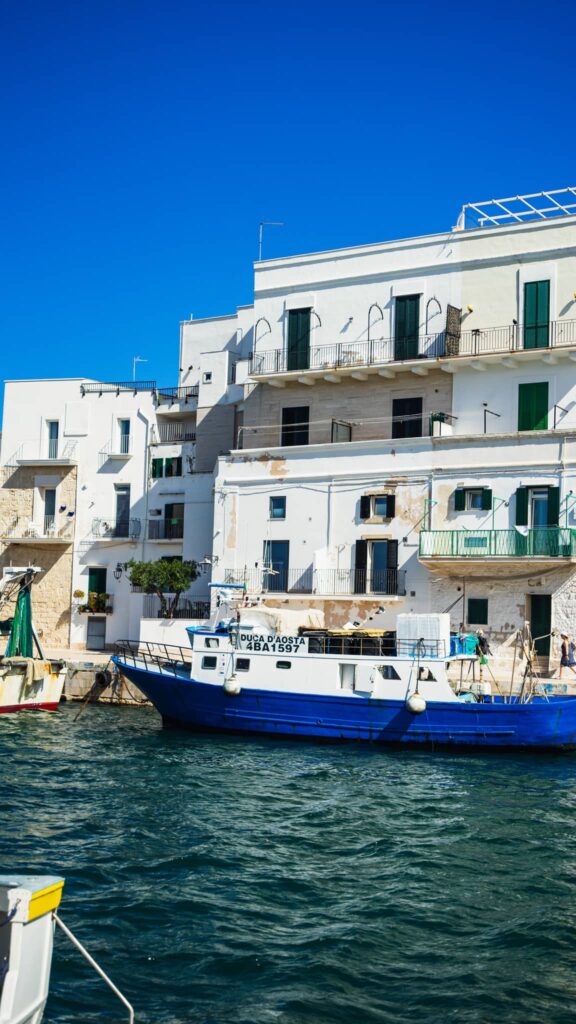
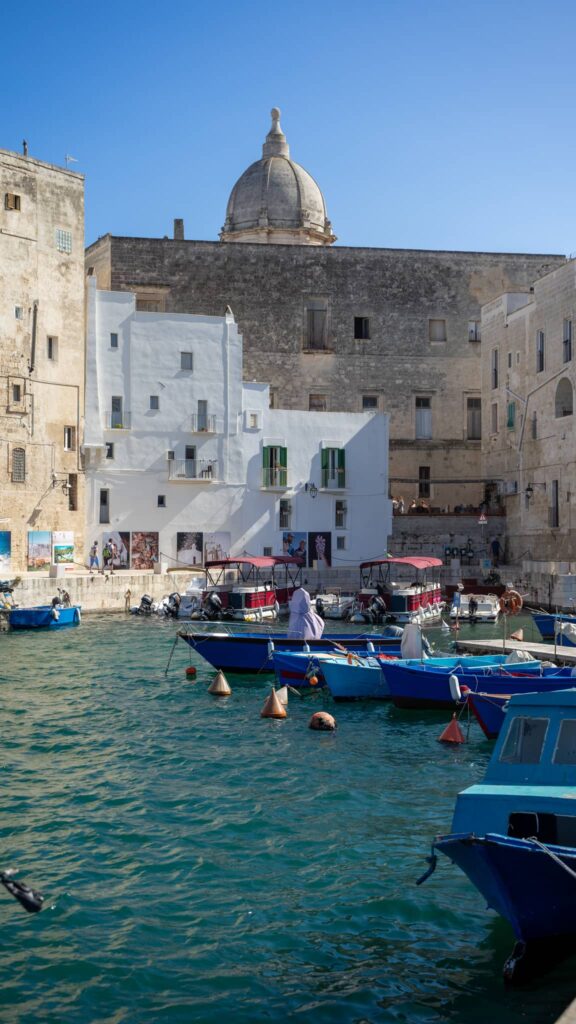
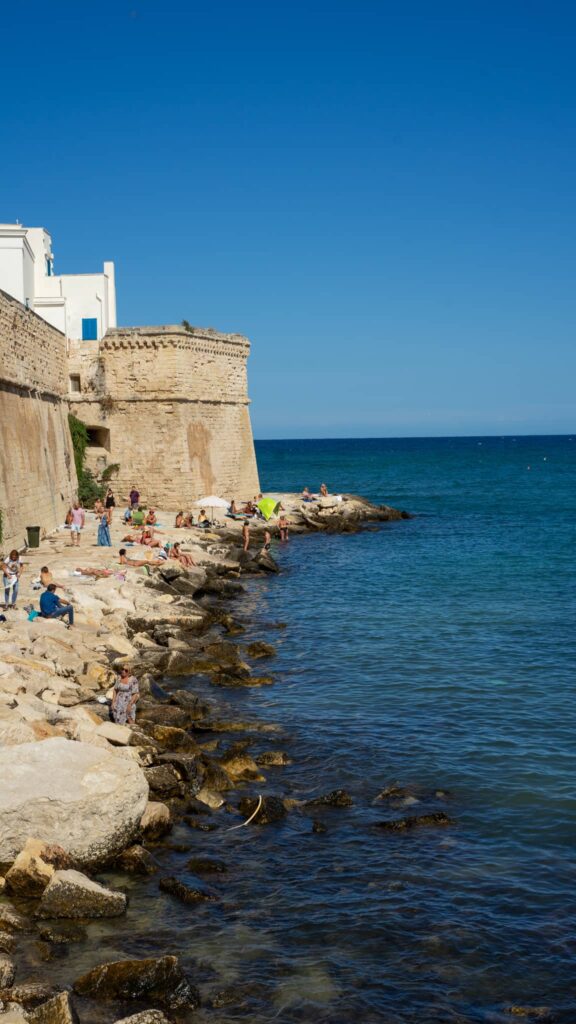
- Locorotondo : Locorotondo is perched on a 400-meter-high hill on a plateau called “Murgia dei Trulli”. The village is classified as one of the most beautiful in Italy.
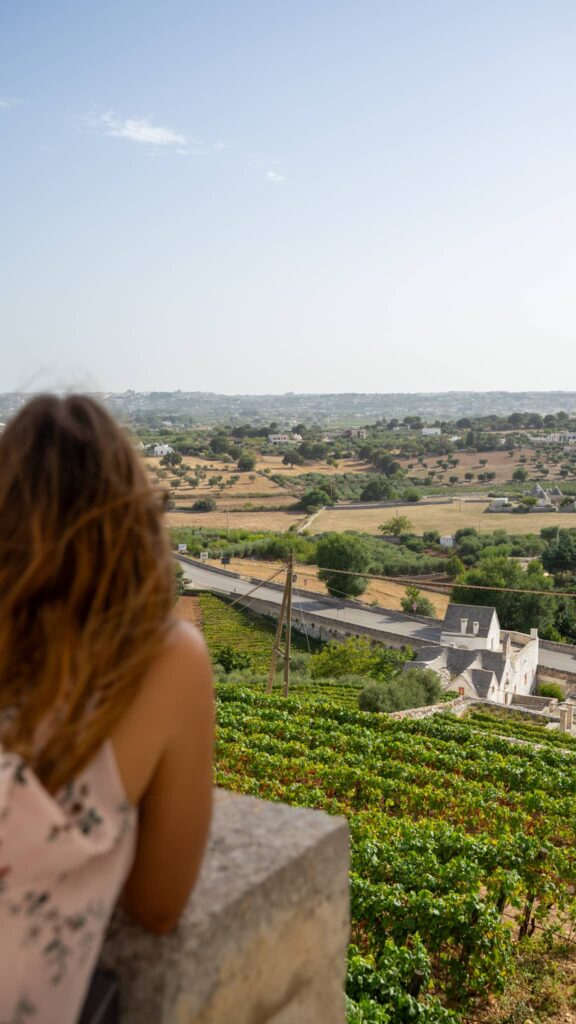
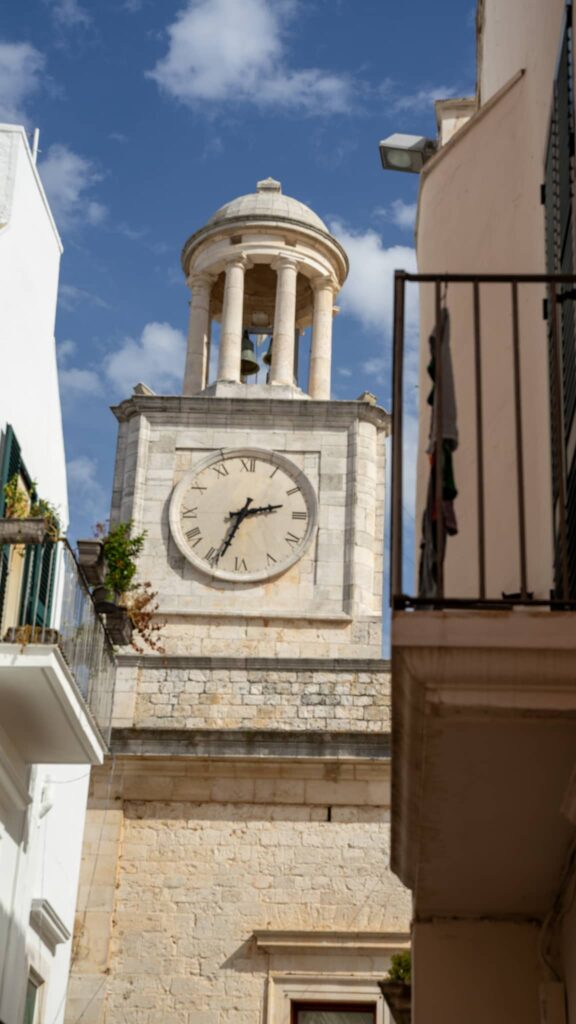
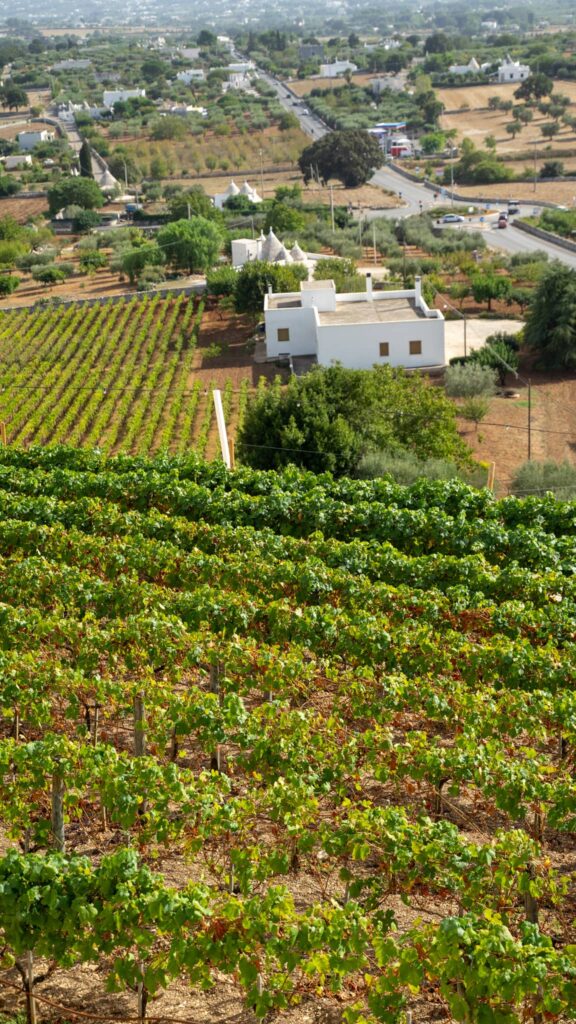
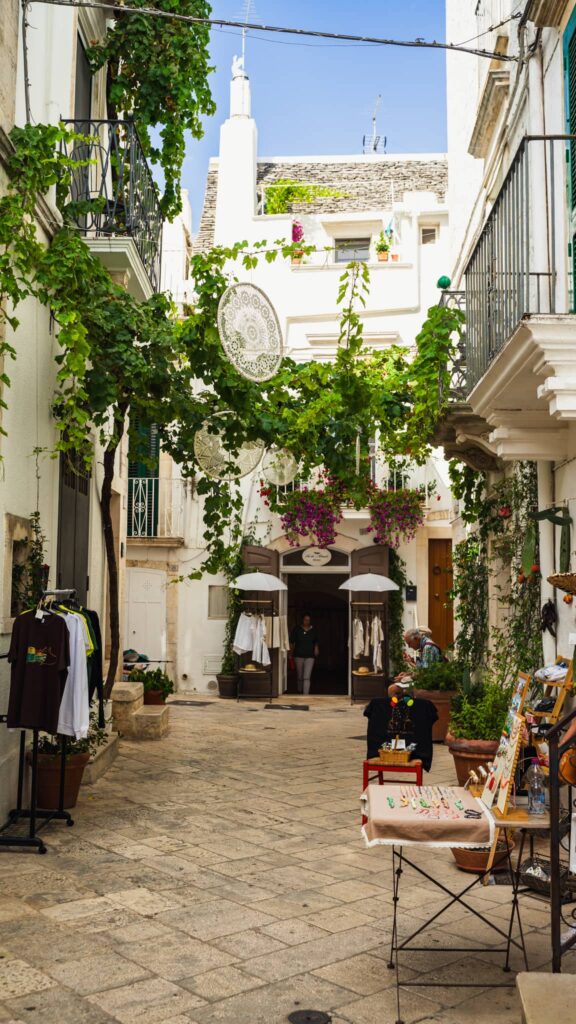
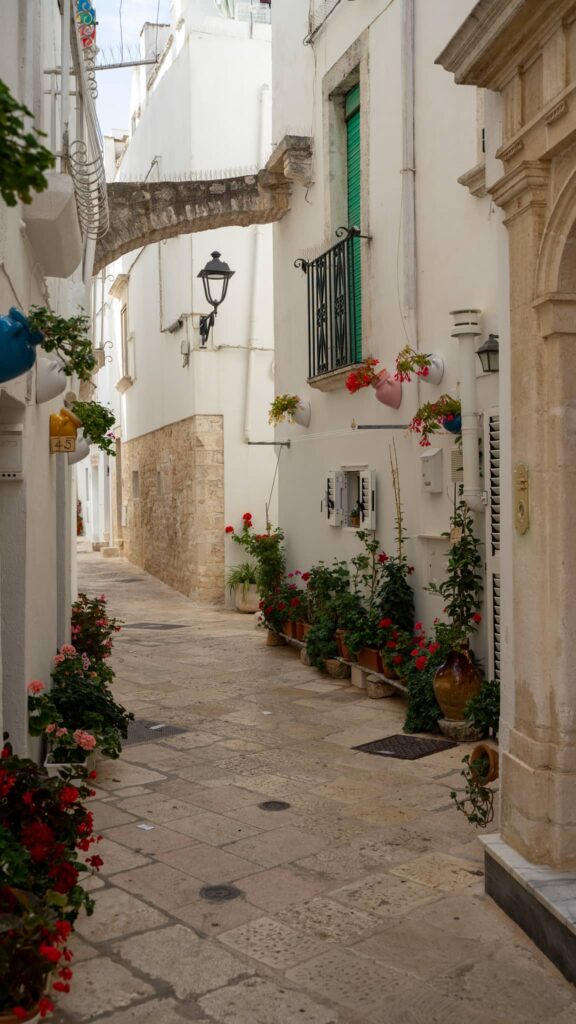
- Alberobello : The famous trulli village! Trulli are typical local buildings, originally built by farmers in the fields. Nowadays, most of them have been renovated while retaining the character of yesteryear to offer typical accommodation to tourists.
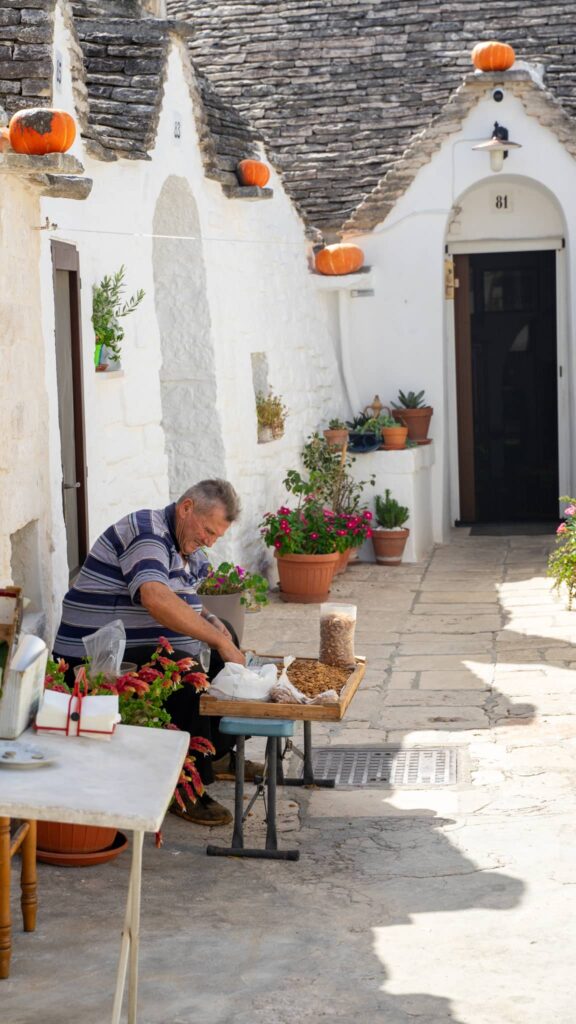
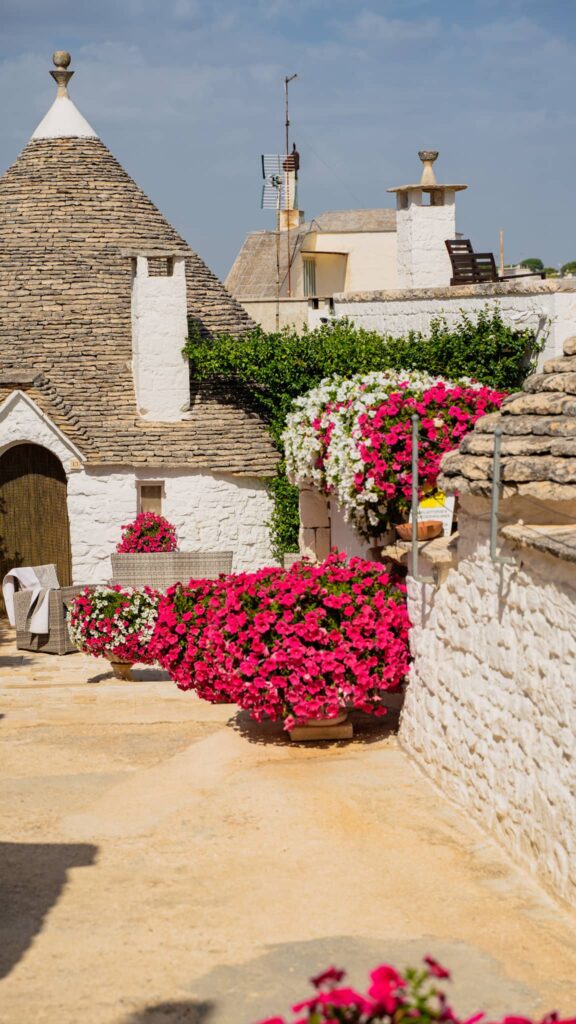
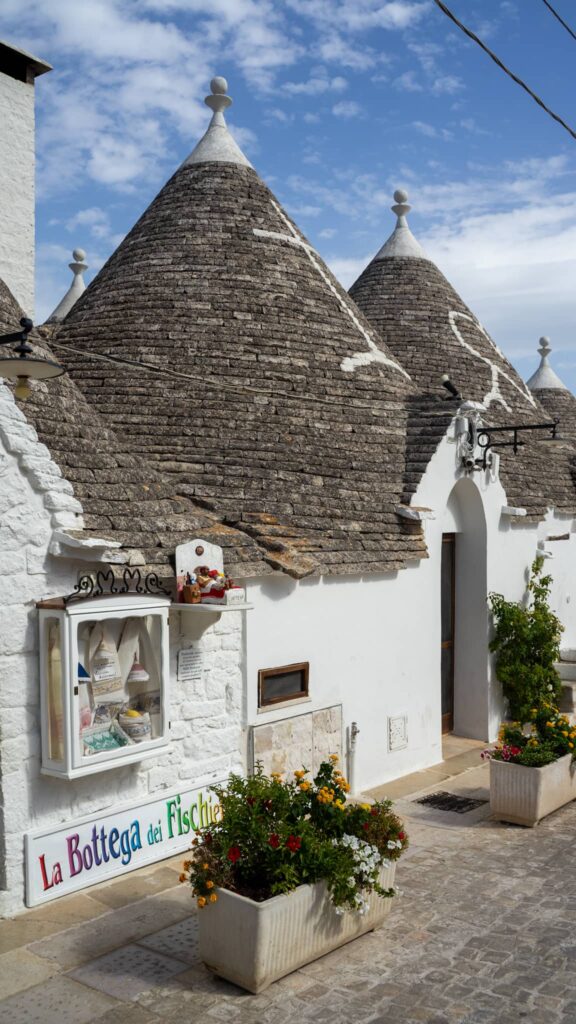
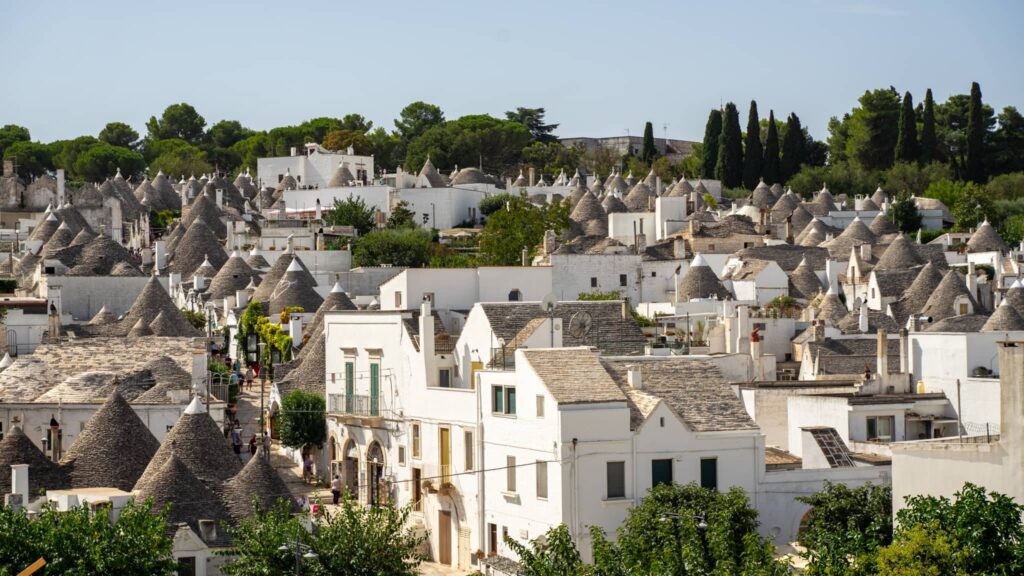
Brindisi Region
- Cisternino: Cisternino is a pretty little town typical of the Itria Valley region. I recommend eating at the Al Vecchio Fornello restaurant.
- Ostuni: This all-white town, la citta bianca, is perched atop three hills and is a real nugget. The historic heart of the town is full of narrow streets and staircases that go in all directions. In the end, don’t follow plans. Let your senses guide you, and you’ll stumble across many great places and a host of nice restaurants and bars.
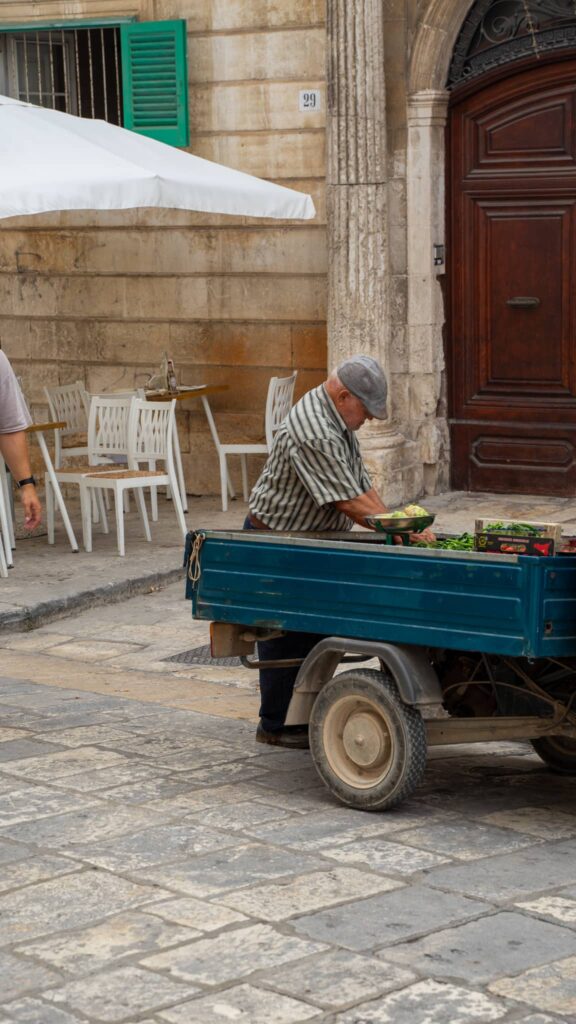
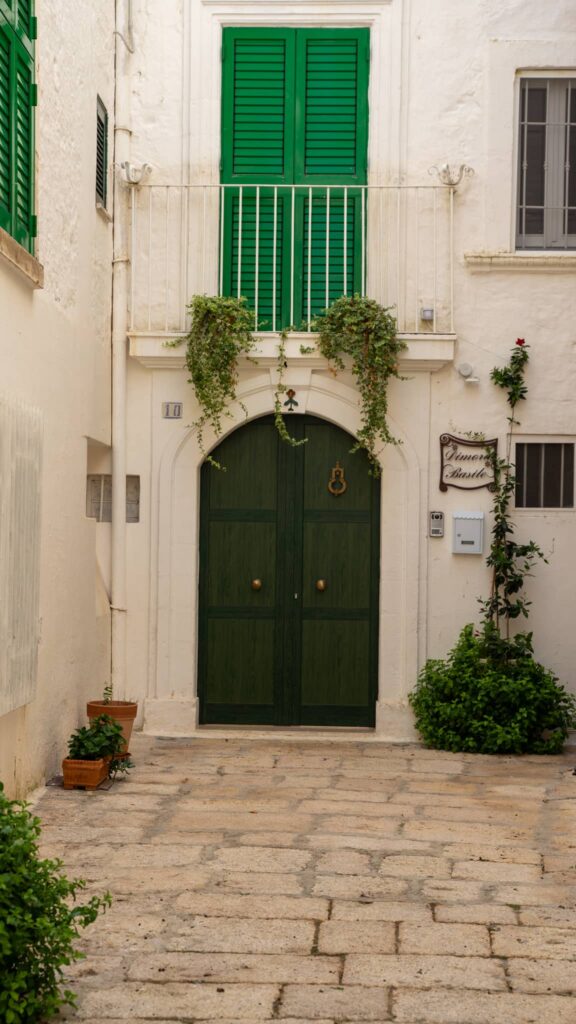
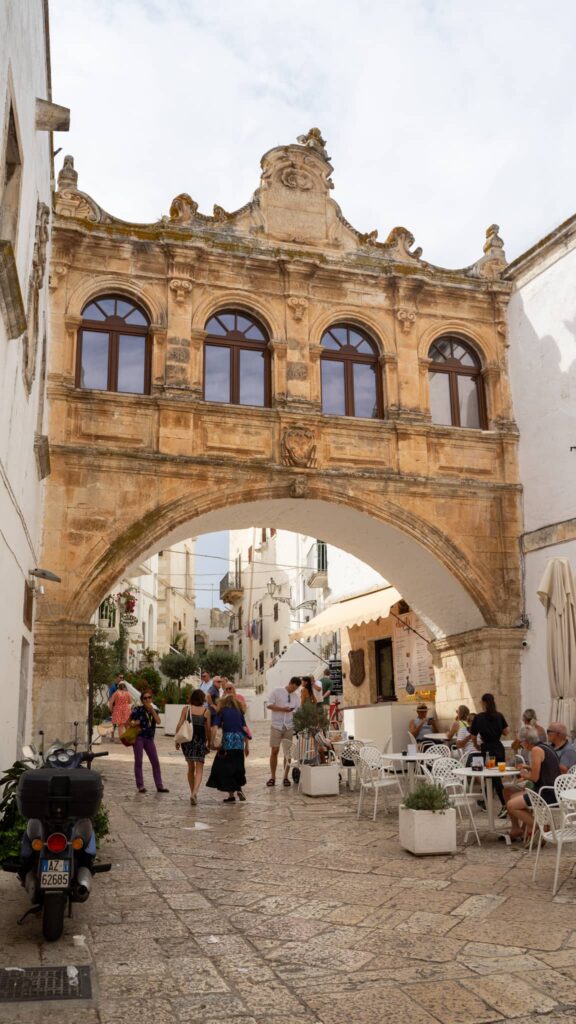
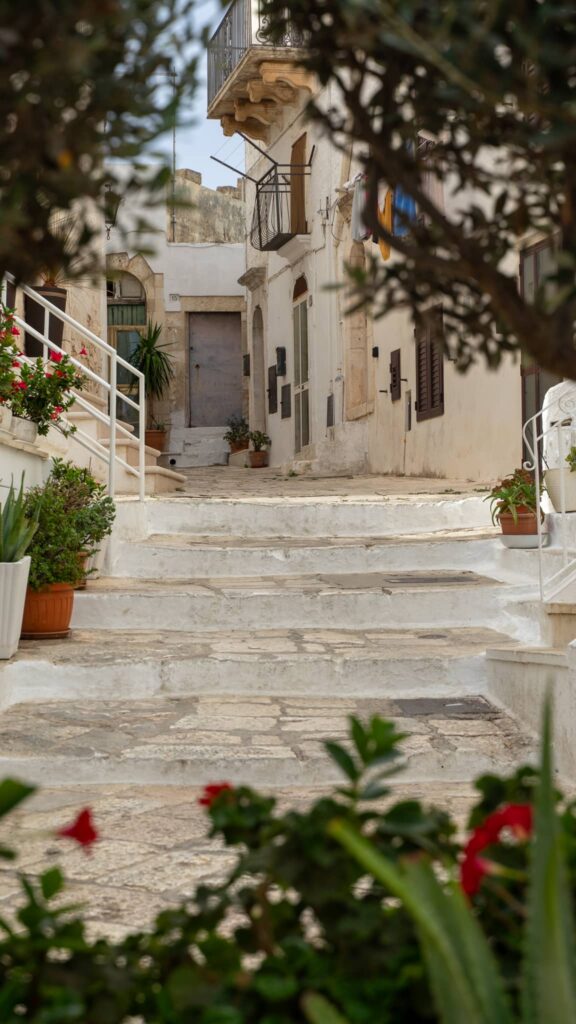
Salento, the tip of Puglia
At the eastern tip of Italy, forming the heel of the Italian boot, Salento is a little corner of paradise, bounded by the Adriatic Sea to the east and the Ionian Sea to the west.
- Lecce: A magnificent city, sometimes nicknamed the “Florence of the South“. It’s brimming with Baroque churches built from “Lecce stone”, a highly malleable limestone. The town’s economy took off in the 14th century, and many of its buildings were constructed in the Baroque style by the town’s clerics and noblemen. There are also many remains of antiquity, including two magnificent Roman amphitheaters, and some from the Middle Ages.

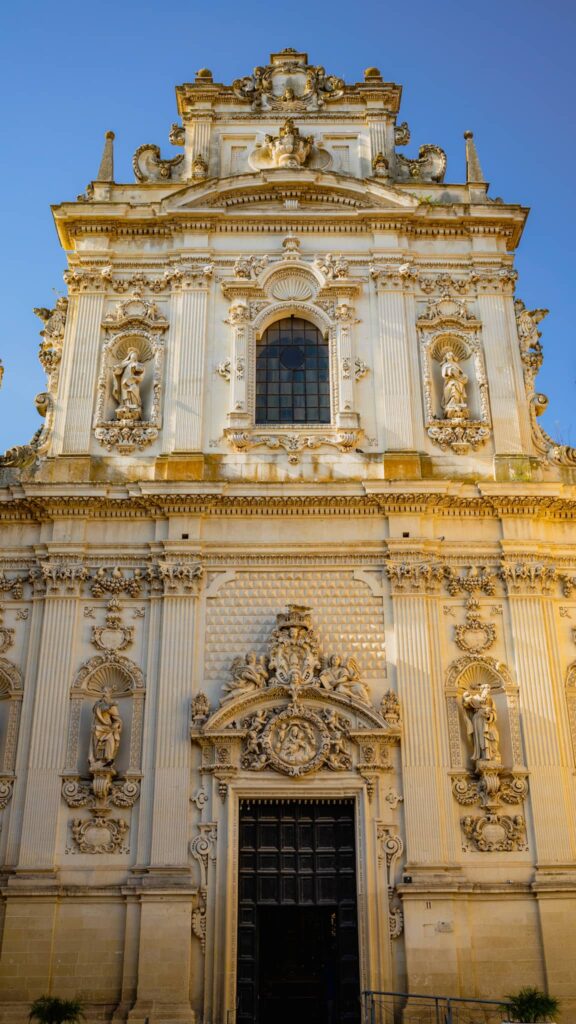
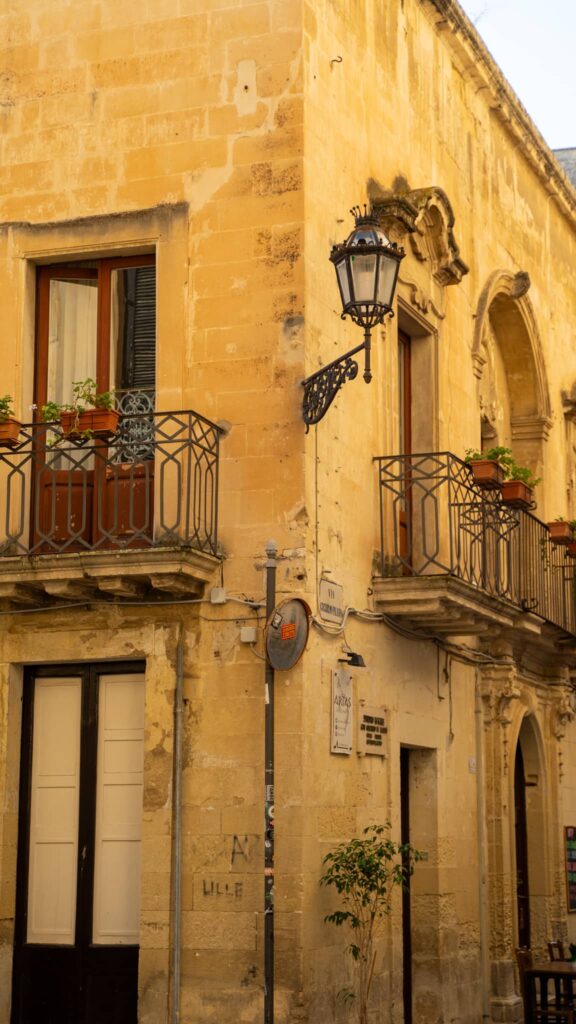
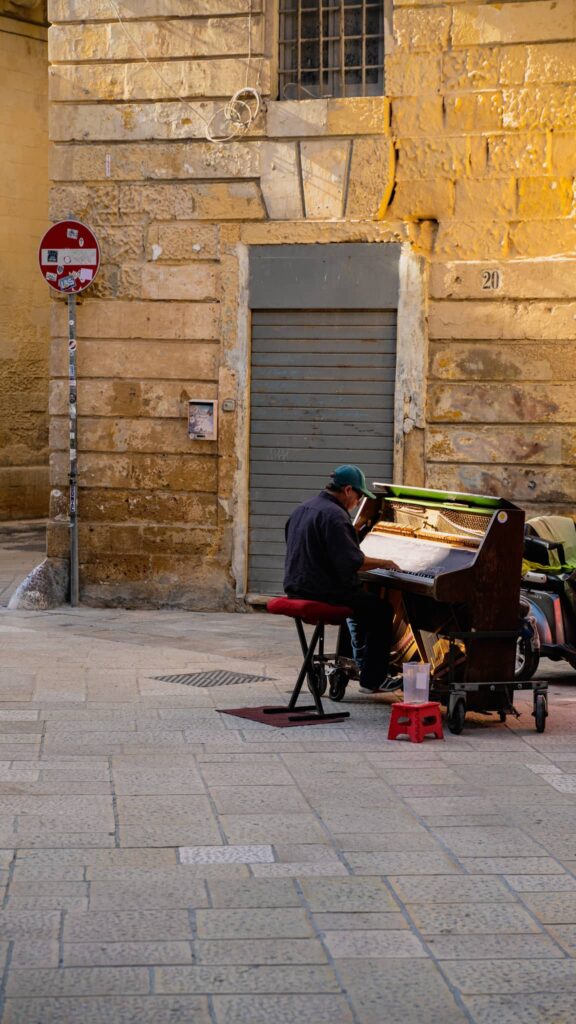

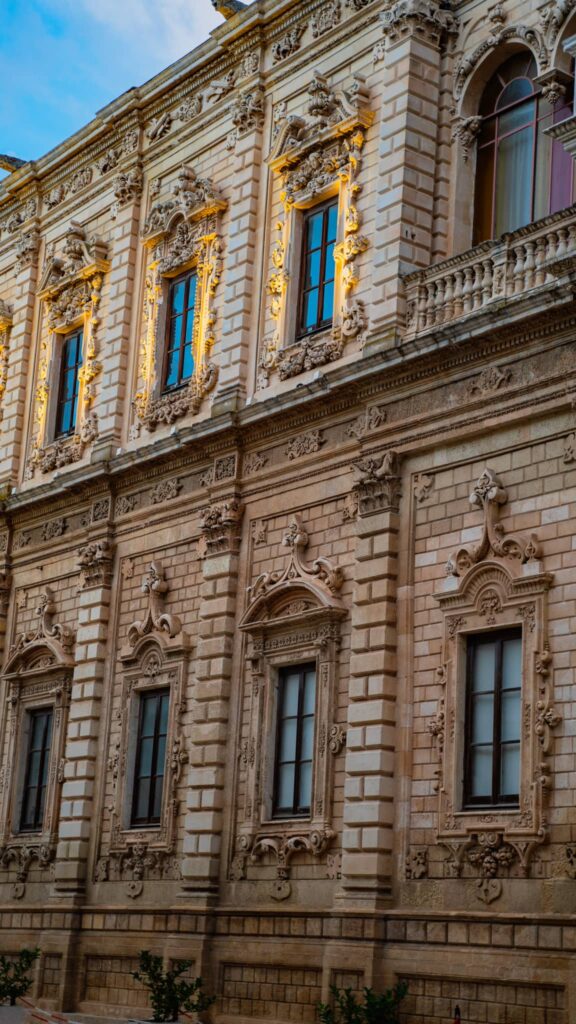
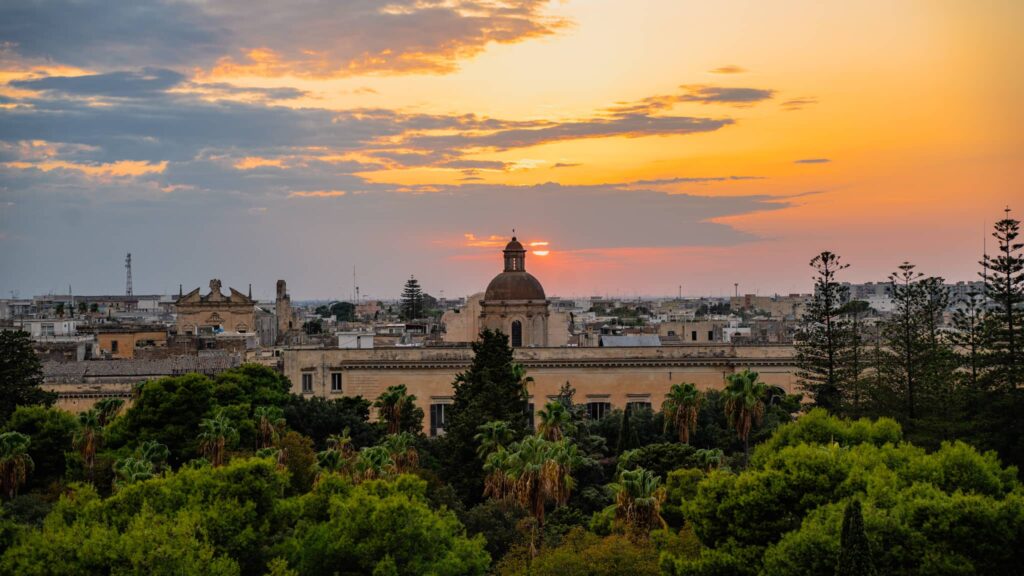
Other towns in the region
Below are a few places we didn’t get to visit during our trip to Puglia, which I think are well worth visiting if you have more time!
- Otranto: Rich in history and breathtaking scenery, Otranto is Italy’s easternmost town and one of the most beautiful and popular in the Salento region. The most beautiful beaches in the Otranto region are not far from the town: the Baia dei Turchic is one of the most characteristic, thanks to the large pine forest from which the paths lead to the beach and the characteristic tufa cliffs.
- Gallipoli: For lovers of social life and youth, a compulsory stopover on a Salento road trip. The splendid sandy coves and crystal-clear sea have made Gallipoli one of the main destinations for those seeking the most beautiful beaches in Salento or the crystal-clear turquoise waters of the Ionian Sea, which have earned the coast the nickname “the Caribbean of Salento”.
- Porto Cesareo: Located on Salento’s Ionian coast, Porto Cesareo is one of Salento’s busiest and most VIP resorts, during the summer season and beyond. It is home to the Porto Cesareo Marine Protected Area and the Palude del Conte and Duna Costiera regional nature reserve. The beach stretches for around 17 kilometers, creating beaches among natural dunes, surrounded by Mediterranean flora.
- Marina di Pescoluse: A seaside resort overlooking the Ionian Sea, Marina di Pescoluse is another jewel not to be missed on your Salento road trip: famous for its fine sand, the town thrives on summer tourism, offering visitors the chance to pamper themselves.
Bonus: Matera
Like Alberobello in Puglia, Matera is unique in the world and has been designated a UNESCO World Heritage Site for its distinctive Sassi dwellings.
The town lies in the Basilicata region, a little-known part of Italy. The good news is that, as it’s only 1 hour from Bari or Taranto, Matera fits perfectly into an itinerary in Puglia. And it would be a real shame to miss out without stopping off!
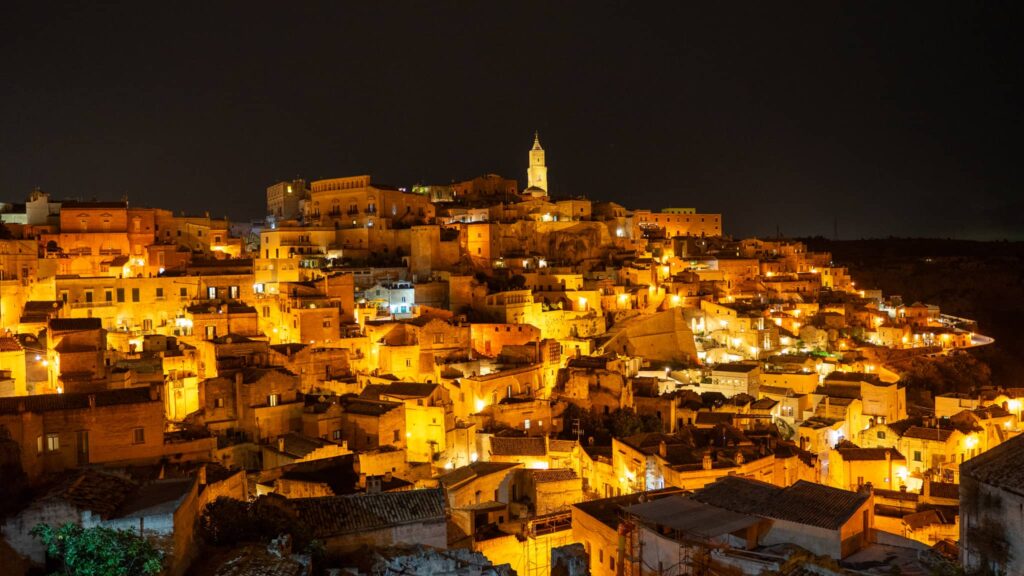
What to do in Matera
Explore the beautiful streets of Sassi di Matera and visit the famous cathedral. Grab an ice cream at the I Vizi degli Angeli ice cream parlor or enjoy a coffee in the beautiful streets of Sassi di Matera.
I recommend the Saxaurea accommodation with its private in-room Jacuzzis for an unforgettable stay.
As for the restaurant, I can recommend Piusudmatera. It is a unique pizzeria in a cave where you’ll find the city’s most delicious pizzas.
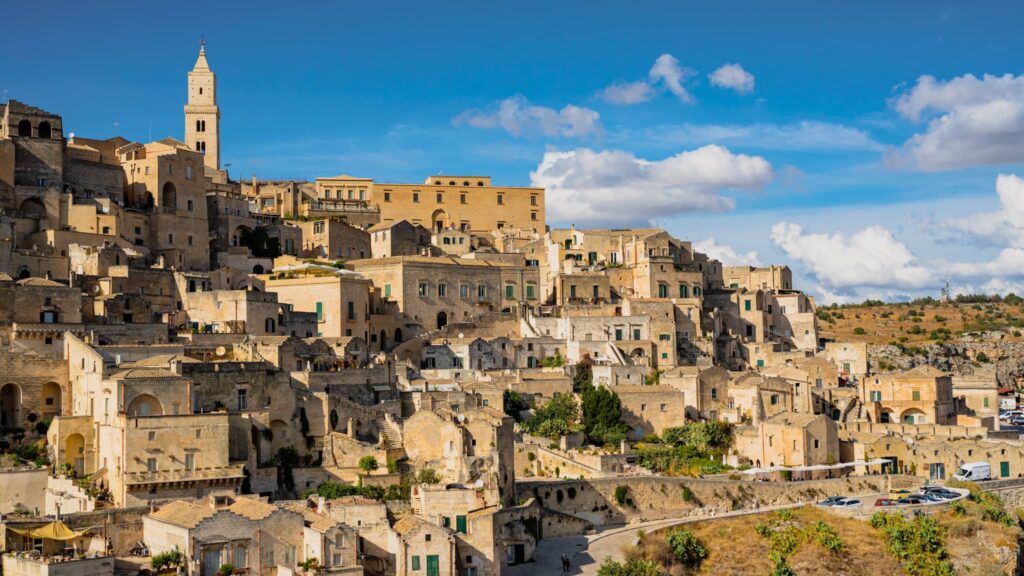
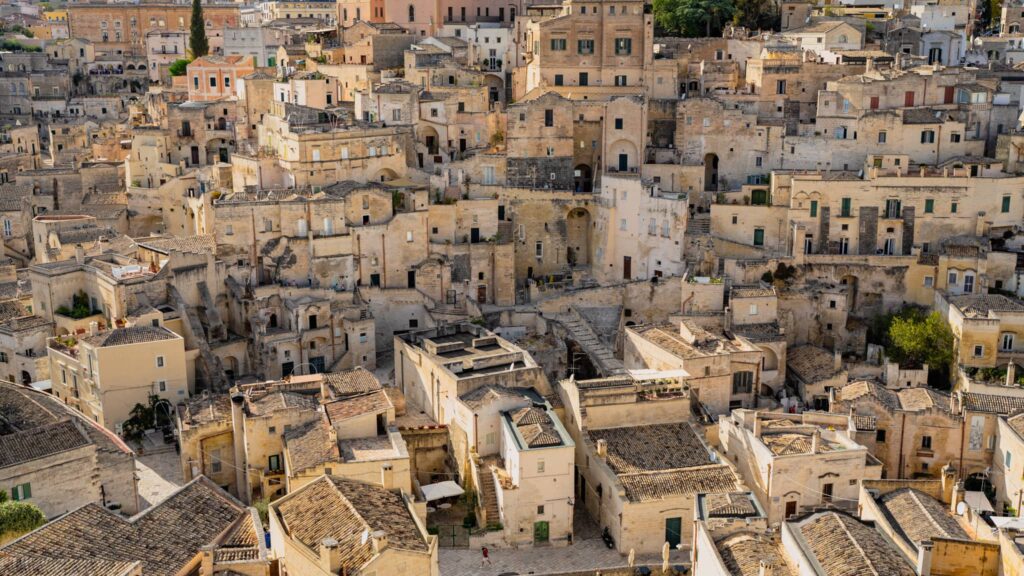
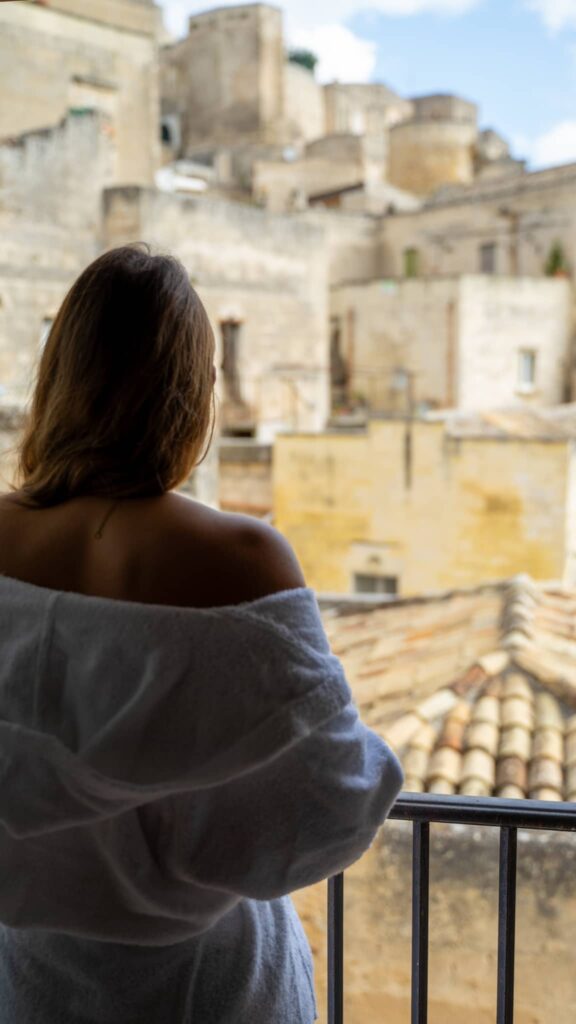

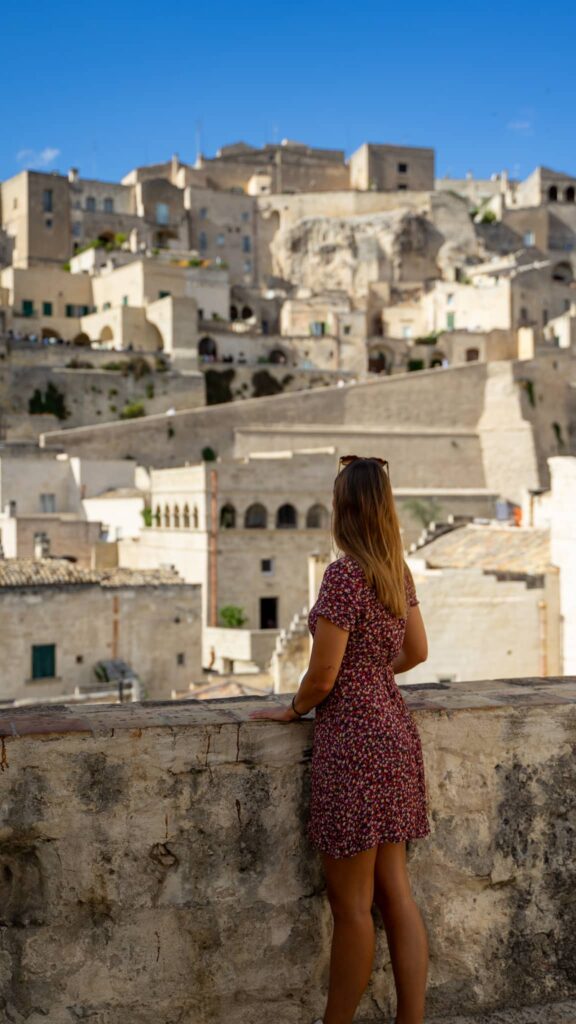
You’ll also find other articles dedicated to Italy on this blog, including my guides to Rome and Milan.
Top beaches in Puglia’s Salento region
- Marina di Pescoluse, Salento: Known as the “Maldives of Italy” for its clean, almost white sand and clear turquoise waters, this family-friendly beach stretches for miles south of the region.
- Spiaggia della Purita, Gallipoli: Located in the City’s historic center, it lies at the foot of the city walls, close to the restaurants and bars of the waterfront.
- Baia dei Turchi, Otranto: At 0.5 km long, this sandy beach can be reached on foot through thick pine forests and maquis. The sea water is crystal-clear and wonderfully warm, and the beach can be very busy during summer.
- Spiaggia di Punta Prosciuto, Porto Cesareo: This family beach is ideal for water sports enthusiasts with its clear waters and white dunes. Windsurfing and diving are available here.
- Torre d’Orso: Torre d’Orso is located a little closer to Lecce. The beach is one of the region’s most spectacular landscapes with its powdery white sand, crystal-clear waters, and two imposing sea cliffs known as Due Sorelle (the two sisters).
You can also swim in Polignano a Mare, where the most famous beach is Lama Monachile or Monopoli.
Some typical Apulian dishes
I’d like to end this article on a gourmet note. Here are a few specialties from the Puglia region.
- Orecchiette: A unique form of pasta, rigorously handmade by skilled pasta makers and so called because it resembles an ear.
- Polpette di pane: Traditionally homemade, bread dumplings result from the anti-waste home economics typical of the mothers and grandmothers of the southern regions.
- Pasticciotto: Breakfast in Lecce can’t be authentic without a “pasticciotto”: a crumbly pastry shell filled with custard. Nothing more and nothing less, but it’s the simplicity that makes “pasticciotto” a real treat you can’t resist.
- Focaccia barese: A high, soft dough, greased to the right point and with crisp edges. Sweet cherry tomatoes and oregano season this focaccia, which has become a symbol of Pugliese street food.
- Panzerotti: Strictly fried in boiling oil, panzerotti is a Puglian specialty! Their typical half-moon shape, filled with tomatoes, mozzarella, and anchovies, is a must for gourmets.
- Taralli: These little salted cookies are served everywhere as an aperitif.
- Puccia is another traditional takeaway snack. It is a sandwich made from pizza dough stuffed with meats, cheeses, and/or vegetables.
- Burrata: a fresh, creamy cheese.
We hope you enjoyed this article about our 7 days itinerary for Puglia. If you’d like more inspiration, check out our other articles about other trips in Europe. Articles are available by clicking here.
OTHER RELATED ARTICLES:

